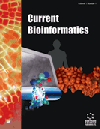
Full text loading...
Cancers routinely exhibit chromosomal instability that results in copy number variants (CNVs), namely changes in the abundance of genomic material. Unfortunately, the detection of these variants in cancer genomes is difficult.
We present Ploidetect, a software package that effectively identifies CNVs within whole-genome sequenced tumors. Ploidetect utilizes a coarse-to-fine segmentation approach which yields highly contiguous segments while allowing for focal CNVs to be detected with high sensitivity.
We benchmark Ploidetect against popular CNV tools using synthetic data, cell line data, and real-world metastatic tumor data and demonstrate strong performance in all tests. We show that high quality CNVs from Ploidetect enable the identification of recurrent homozygous deletions and genes associated with chromosomal instability in a multi-cancer cohort of 687 patients. Using highly contiguous CNV calls afforded by Ploidetect, we also demonstrate the use of segment N50 as a novel metric for the measurement of chromosomal instability within tumor biopsies.
We propose that the increasingly accurate determination of CNVs is critical for their productive study in cancer, and our work demonstrates advances made possible by progress in this regard.

Article metrics loading...

Full text loading...
References


Data & Media loading...
Supplements

